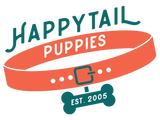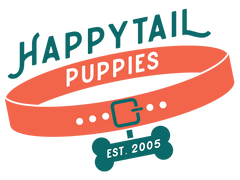Understanding The Behavior of Your Pug: What Is It Trying to Tell You?
Pugs are often known to show their quirky side. These little adorable pups are filled with charm. In reality, pug's behavior and their quirkiness will add to their appeal. They are the funniest little goofballs, filled with wrinkles, snores, snorts, as well as toots.
The behavior of pugs is often confusing, leading to greater troubles down the line. The pugs are bigger dogs with smaller bodies, meaning that they are braver whenever running to hump a German Shepherd right at the dog park. They are often stubborn and appear to have a selecting mode of hearing. The pugs are voracious appetites that eat first and ask questions later. It is common for a pug to eat, lick or hump on something that gets them into their precarious conditions.
The Importance of Body Language
Body language is an essential feature of canine communications. Pugs, with their compact bodies and excessive faces, convey a lot with their physical gestures.
Tail Wagging and Position
Various emotions are portrayed through the movement and the positioning of your pug's tail:
- High and Wagging: Pugs that lift their tails and wag their tails show the level of excitement and happiness they have. Here, your pug is generally in a state where it is more comfortable and receptive to playful interaction.
- Low and Tucked: This indicates that the pups' anxiety or fear levels are high whenever they curl their tails between their legs. The first thing you should do is try to recognize what is amiss in their environment so that your little friend feels as safe as possible.
- Stiff and Still: When the tail is erect and rigid, it tends to indicate concerns or anxiety. Your pug is more anxious because its sense or vision targets anything new or unfamiliar that it has not encountered before.
Ear Position
While pugs have floppier and smaller ears compared to a few breeds, their movements also portray emotions, such as:
- Forward and Perked Up: It shows their interest or curiosity. Your pug is more focused on something, and you should find it out.
- Flattened against the Head: This normally signals submission, anxiety, or fear. It would be best to be attentive to this context and try to calm it.
Vocalizations: What Are They Saying?
Pugs are known to be extremely vocal, and their sound often ranges from grunts to barks. Each of these sounds shows a meaning here:
Barking
Baking is the main mode of communication for the dogs:
- Excited Barking: The rapid and high-pitched barking would show their eagerness or excitement, like anticipating their playtime or walk.
- Alert Barking: A highly intense and continuous barking indicates that your pug is sensing something unusual or perceiving a threat.
Grunting and Snorting
Pugs are often notorious for their snorts and grunt, which are often due to their short-nosed anatomy:
- Content Grunting: Softer grunts upon resting or while getting petted mean that your pup is more relaxed and comfortable.
- Snorting: Frequent snorting often becomes a sign of excitement; however, an excessive amount of snorting indicates respiratory issues that are common in pugs.
Behavioral Quirks and Their Meanings
They would then demonstrate several random peculiar actions that the owners would normally not have imagined that their pugs would possibly perform, all in a single sitting. Such peculiarities, however, must be taken into consideration when the need arises to take good care of such patients.
- Circling and Tail Chasing: Many of the pugs would begin to exhibit what can be referred to as tail chasing or circling activity before they go to rest. It is the kind of behavior that pretty as a way to spend their energy. However, excessive barking means that the situation is more pathological, and hence, it would require the attention of vets, where the problem might be related to neurological implications or anxiety.
- Pawing and Nudging: Anytime your pug puts its head on your lap or hits you with its head, it may just want to be embraced or petted. The tail flapping is an indirect sign of what the pug desires, such as being played with, fed, petted, etc.

Signs of Stress and Anxiety
Identifying the signs of anxiety or stress in your pug is important for their mental well-being.
- Excessive Panting: Although pugs pant naturally due to their short noses, excessive panting is a sign of overheating or stress.
- Destructive Behavior: Excessive licking or chewing on furniture is the most common sign of anxiety. Give them chew toys, create a safer space, and maintain a consistent regime to help remove such behaviors.
- Avoidance or Withdrawal: When your pug starts to avoid interacting or hides, it shows its fear and stress. Try identifying its cause and eventually desensitizing your pug to trigger it for help to feel highly secure.
Frequently Asked Questions
Let us go through some frequently asked questions about pug's behavior.
Do Pugs have behavioral problems?
Although most pugs are generally obedient, loyal, and disciplined, depending on their personality, a few may showcase behavioral issues.
What is the attitude of a Pug?
Pugs are bred as companions to pleasure their owners. They have stable and even temperaments, huge charm, and a loving or outgoing disposition.
What is the mentality of a Pug?
Pugs are highly intelligent and sensitive. These little dogs with stubborn streaks will need a strong, good hand whenever it comes to training.


